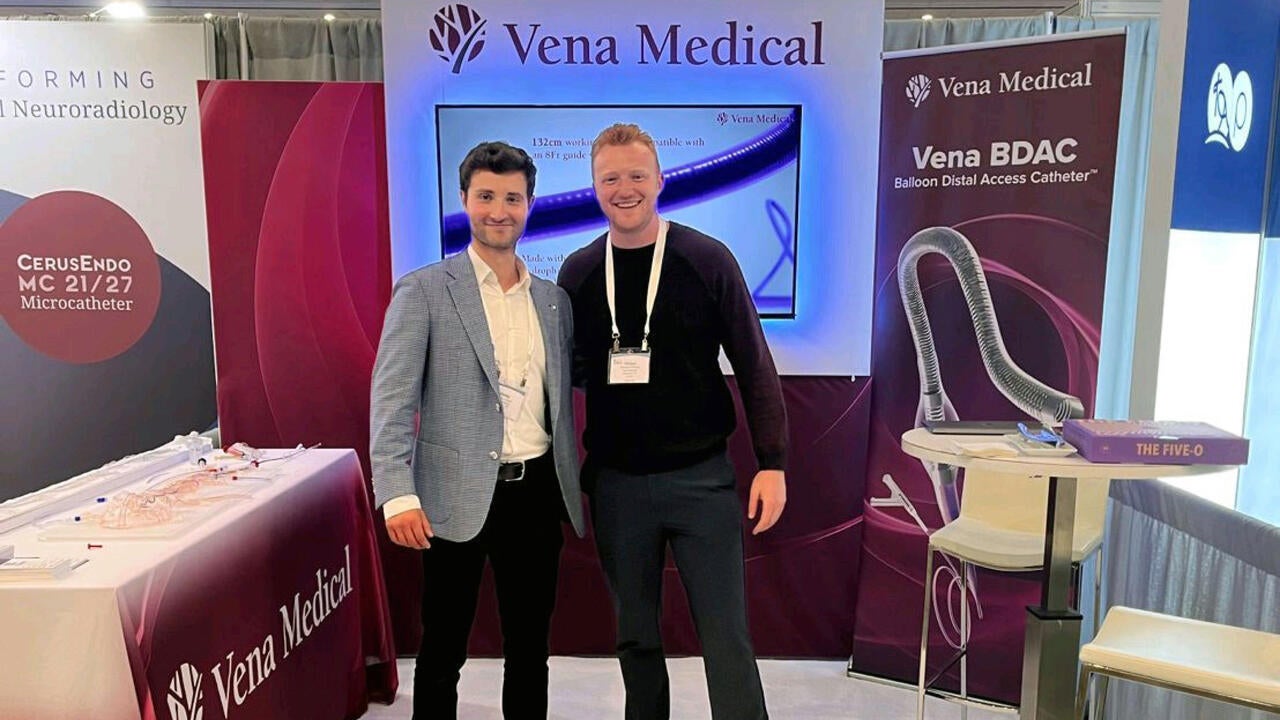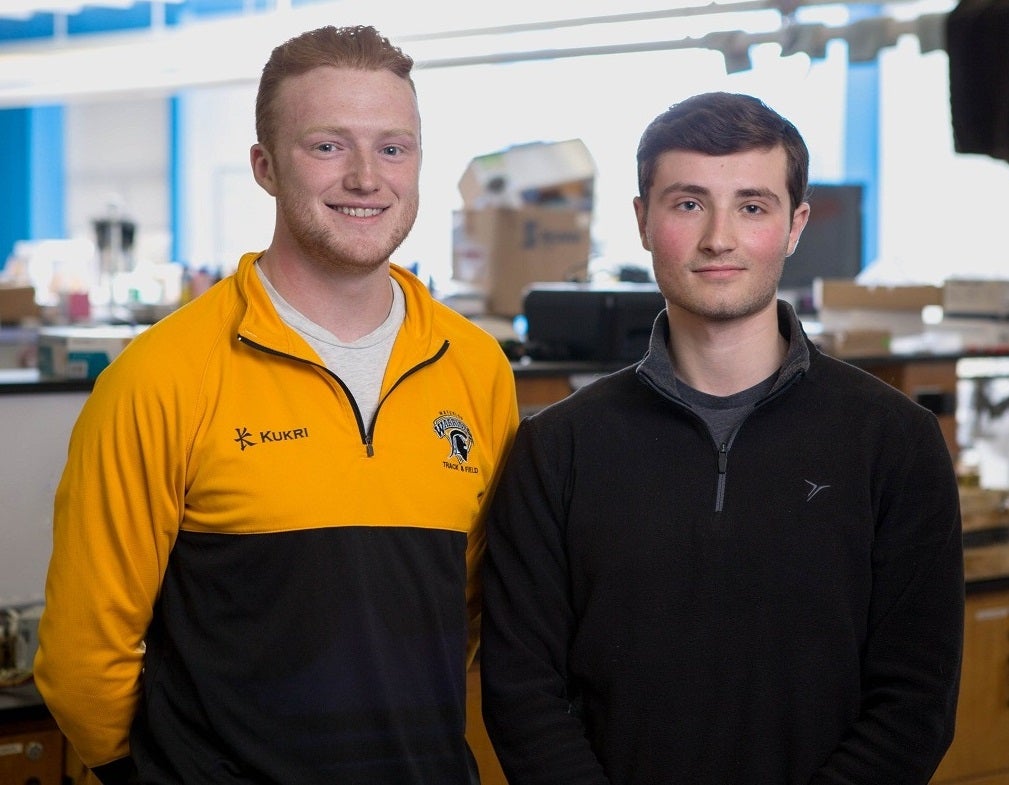
Ground-breaking companies develop at Velocity Science
Velocity Science returns to campus and is ready to advance the growth of science-based startups

Velocity Science returns to campus and is ready to advance the growth of science-based startups
By VelocityGlobal advancements in sciences, together with digital transformation, continue to accelerate innovation, significantly impacting all sectors of the economy. Velocity Science companies lead the way, helping thousands of patients, combating production shortages, and solving accessibility issues and sustainability for long-term solutions.
This fall, Velocity Science is reopening to welcome a new wave of student entrepreneurs. Velocity Science initially launched in 2014 but temporarily closed in 2020 due to the pandemic. Velocity continues to support successful science ventures through their partnership with the Faculty of Science and the Science Innovation Hub.
“We are excited to welcome students back into Velocity Science. Many successful science-based companies have come out of Velocity Science. I can’t wait to see what the next group of entrepreneurs will create,” says Robert P. Lemieux, University of Waterloo’s Faculty of Science dean and professor of Chemistry. The program offers an on-campus lab and discovery space with world-renowned mentorship for students working on startups in life and physical sciences.
“I am absolutely thrilled that we are reopening Velocity Science this fall. The space resonates with me personally because in many ways it was where my own entrepreneurial journey began with Nicoya. Not only did it supply our fledgling company with much needed lab space and supplies, but it also introduced us to a community of student startups to work beside and support. I cannot wait to bring that fantastic culture back to campus,” says John Dick, director of Velocity Campus.
In addition to Nicoya, Velocity Science was the birthplace of many companies that continue to operate in the region like Arylla, Avro Life Science, Halion Displays, Kenota Health, Membio Inc., Nano CNET, NERv, Qidni Labs and Vena Medical, which went on to collectively raise more than $70 million in investment. Some of these companies, like Arylla, Halion Displays and Qidni Labs still reside in the Velocity incubator.
Several Velocity Science companies, like Vena Medical and Membio Inc., are making a significant mark in health care.
Michael Phillips (BASc ’17) and Phillip Cooper (BASc ’17) founded Vena Medical in the final year of their undergraduate degree with supports including Velocity Science. Vena creates tools to change the way that physicians perform minimally invasive neurosurgery. Their flagship product is the world's smallest camera, capable of going inside veins and arteries to help physicians treat stroke. The camera provides doctors with the ability to look from inside of the body in real time and offers greater image quality allowing for improved treatment of patients and ultimately better outcomes. Without this technology, doctors are guided by external X-Ray.

Michael Phillips (L) and Phil Cooper (R) of Vena Medical during their early days at Velocity Science.
"Velocity Science gave us the first opportunity to access to prototyping and space that was dedicated to the bio-related activities we were working on. It prevented us from having to test things out in our bathtub and we were surrounded by experts to make sure we were doing things the right way. We learned more every week from the peer-to-peer Velocity Science meetings than we ever could on our own, and now those innovations we developed are helping real patients since we've received our Health Canada Medical Device License,” says Michael Phillips, co-founder and CEO of Vena.
Phillips and Cooper were inspired by the combined seven physicians within their immediate families and specifically Cooper’s father, who is an interventional radiologist and guided by external X-Ray for procedures he conducts. Dr. Steven Cooper shared with them that he just wanted to see what was going on inside the veins and arteries of the patient. Vena Medical is making that, and much more, possible.
Another company that continues to imagine new possibilities in health technology, Membio Inc. knows the importance of access to support at an early stage. “Velocity was really critical for Membio from the very beginning of the company and the University of Waterloo is really the only place that I know of where you can go in, and test your ideas, and get access to equipment that would simply be prohibitively expensive. Waterloo has amazing opportunities to really combine depth of engineering in new and unique ways into the field of biotechnology,” recalls Shane Kilpatrick (MASc ’17, MBET ’18), founder and CEO of Membio.
Membio is focused on commercializing cell manufacturing technology such as single use bioreactors that make cells easier, faster and less expensive to manufacture.
Velocity Science is just one of the many supports available to students interested or working on their entrepreneurship journey. Students can also work at the Problem Analysis & Ideation HQ or the 5G Digital Zone or participate in the many events, opportunities and programs like Zero, Problem Pitch or Cornerstone, held each term by Velocity. There’s something for everyone, whether you are just starting out or further along in your journey.
Velocity Science looks forward to welcoming students back in the 2022 fall term. The lab is located on campus within The Science Innovation Hub at ESC 319. Working at Velocity Science, students can expect guidance from mentors, technical advice and support, access to lab instruments and consumables, all while working among other student teams.

Read more
This Waterloo grad is working to ensure the world has a safe and sustainable supply of blood

Read more
Alumnus startup Vena Medical earns Health Canada approval for device to treat stroke victims

Read more
Device links to phone app and could hit the market in 2023
The University of Waterloo acknowledges that much of our work takes place on the traditional territory of the Neutral, Anishinaabeg, and Haudenosaunee peoples. Our main campus is situated on the Haldimand Tract, the land granted to the Six Nations that includes six miles on each side of the Grand River. Our active work toward reconciliation takes place across our campuses through research, learning, teaching, and community building, and is co-ordinated within the Office of Indigenous Relations.